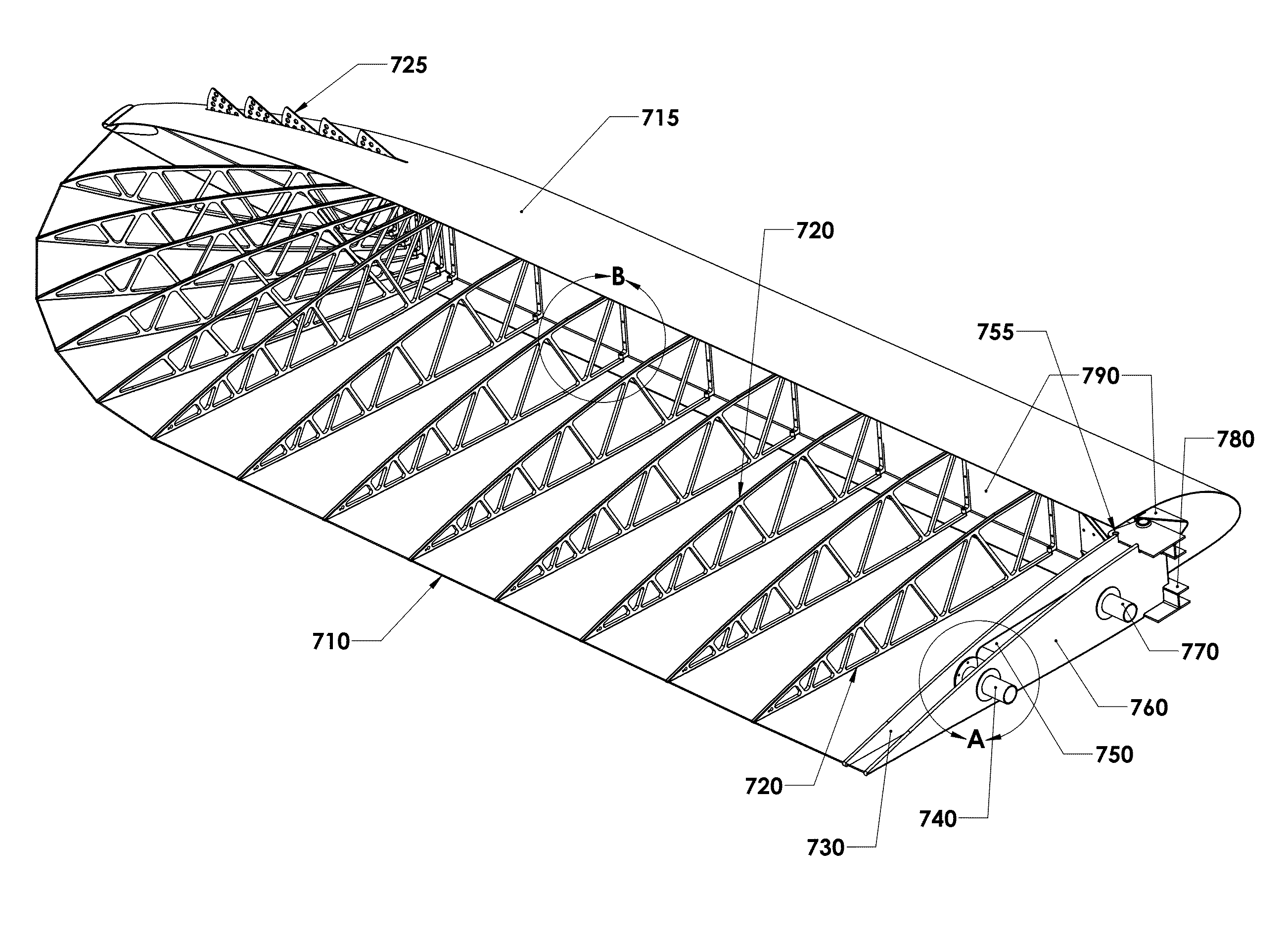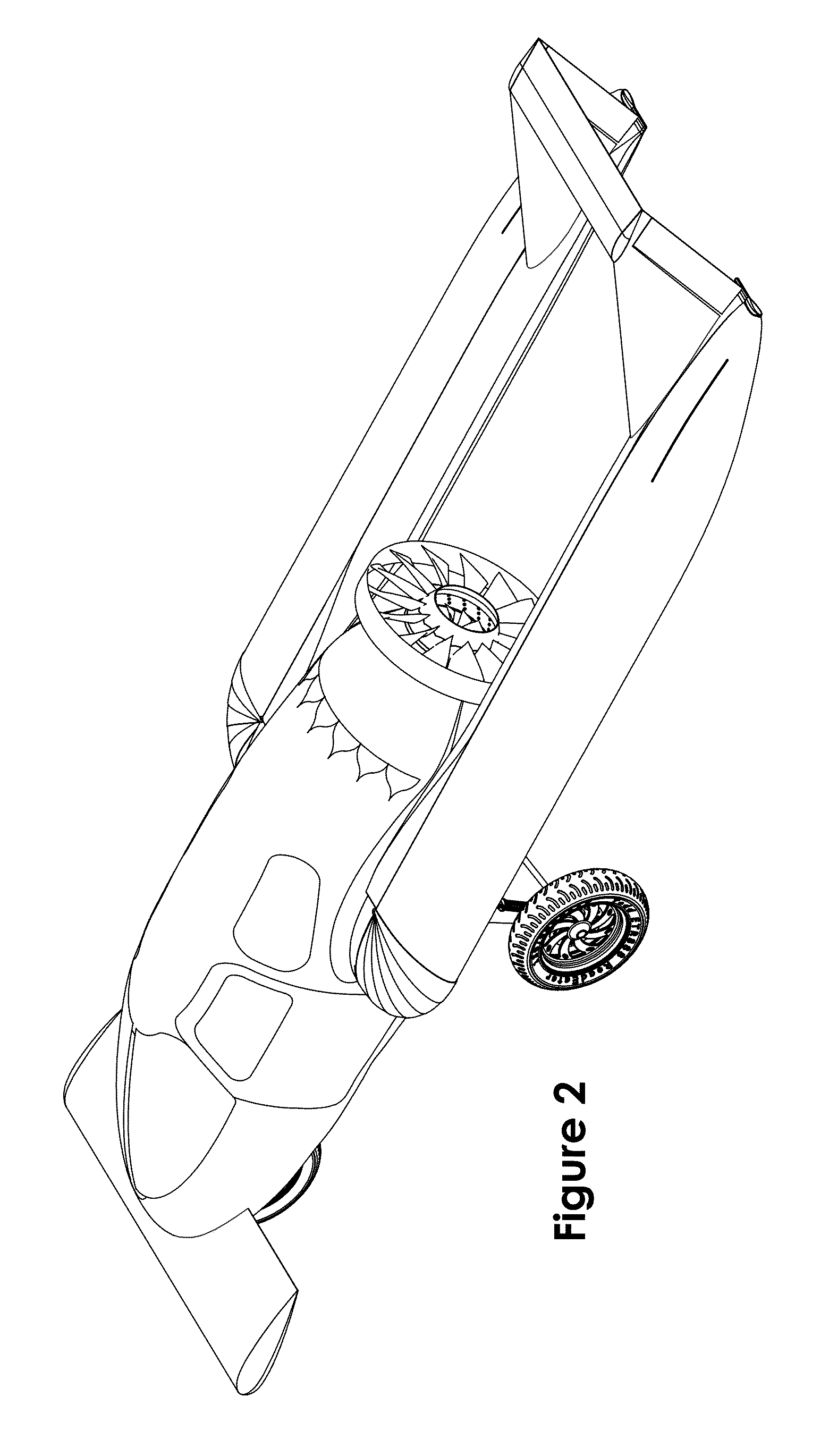Roadable aircraft with collapsible wings and ductless fan
a ductless fan and collapsible technology, applied in the direction of canard-type aircraft, aircraft convertible vehicles, efficient propulsion technologies, etc., can solve the problems of no commercial success, no commercial success, no design became commercially successful, etc., to eliminate complex and heavy ducting, maintain tension, and reduce the effect of cross wind resistan
- Summary
- Abstract
- Description
- Claims
- Application Information
AI Technical Summary
Benefits of technology
Problems solved by technology
Method used
Image
Examples
Embodiment Construction
[0107]FIG. 1 is a front quarter perspective view of the roadable aircraft of the present invention, illustrated in a road-going configuration with wings collapsed and folded back for travel. FIG. 2 is a rear quarter perspective view of the roadable aircraft of the present invention, illustrated in a road-going configuration with wings collapsed and folded back for travel and showing more clearly the ductless fan of the present invention. FIG. 5 is a front quarter perspective view of the roadable aircraft of the present invention, illustrated in a road-going configuration with wings collapsed and folded back for travel.
[0108]Referring to FIGS. 1 and 2, an overall view of the roadable aircraft in road-going configuration is presented. The roadable aircraft of the present invention comprises a fuselage 100, which may be made of composites, riveted aluminum, traditional tube and fabric techniques, or any combination thereof. In the preferred embodiment, fuselage shell may be made of com...
PUM
 Login to View More
Login to View More Abstract
Description
Claims
Application Information
 Login to View More
Login to View More - R&D
- Intellectual Property
- Life Sciences
- Materials
- Tech Scout
- Unparalleled Data Quality
- Higher Quality Content
- 60% Fewer Hallucinations
Browse by: Latest US Patents, China's latest patents, Technical Efficacy Thesaurus, Application Domain, Technology Topic, Popular Technical Reports.
© 2025 PatSnap. All rights reserved.Legal|Privacy policy|Modern Slavery Act Transparency Statement|Sitemap|About US| Contact US: help@patsnap.com



